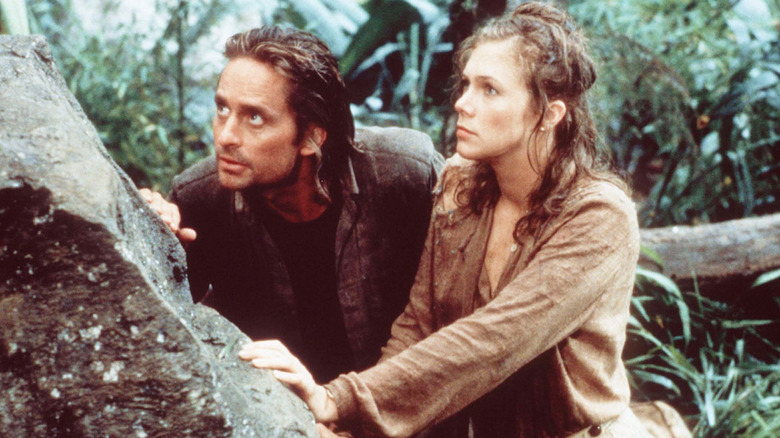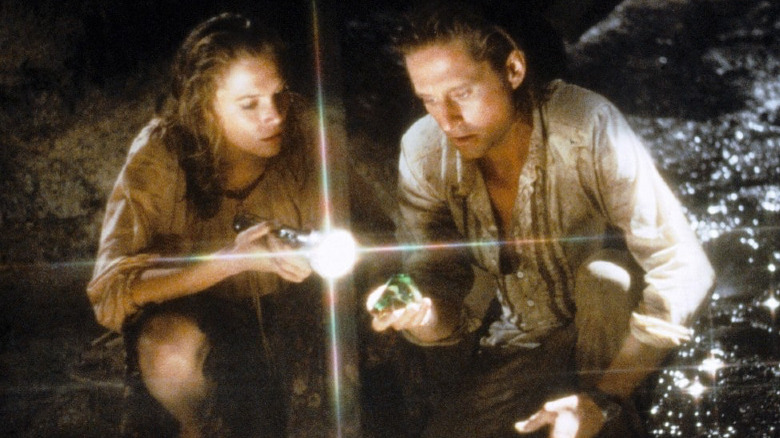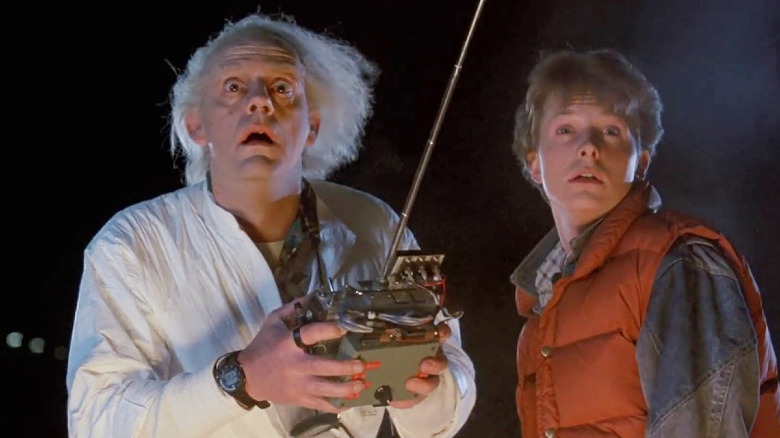How Romancing The Stone Got Robert Zemeckis Fired From Cocoon
There are few directors who have innovated special effects while advancing the art of populist filmmaking like Robert Zemeckis, the tech-whiz behind the "Back to the Future" trilogy, "Who Framed Roger Rabbit," and "Forrest Gump," among other landmark movies from the 1980s and '90s. That may also be why his first two feature-length films — 1978's "I Wanna Hold Your Hand" and 1980's "Used Cars" — are often overlooked; on top of being financial duds, they lacked the bells and whistles that would come to define his later work (though not always in a good way). In spite of this, critics were upbeat on both movies from the get-go, and for fair reason. Looking back on them now, it's all the more apparent they have many of the qualities (stories that unfold like clock-work, great soundtracks, both nostalgia for and satire of historical U.S. culture) that would go on to become hallmarks of Zemeckis' most widely-adored, effects-heavy output from the decades that came after.
In a way, the commercial failure of "I Wanna Hold Your Hand" and "Used Cars" might have been a blessing in disguise for Zemeckis when he went to direct his third movie, 1984's "Romancing the Stone." While executives at the studio formerly known as 20th Century Fox recognized his talent, the fact that he was 0-for-2 at the box office had some of them worried when he came aboard to oversee their now-classic rom-com-adventure. Those concerns only grew when he then signed on to helm another movie for the studio, "Cocoon," prior to finishing "Romancing the Stone." This was also a key factor in the events that led to Zemeckis being fired from "Cocoon," prior to shooting a single frame of footage.
Someone at Fox had it out for the movie
For those unfamiliar: "Romancing the Stone" starred Kathleen Turner as Joan Wilder, a wildly popular romance novelist who yearns to meet and fall in love with someone like the male heroes in her books. However, Joan gets much more than she bargained for when she travels to Colombia to exchange a treasure map for her sister Elaine (Mary Ellen Trainor), who's been taken captive by a pair of antiquities smugglers (Danny DeVito and Zack Norman) seeking the treasure — a fabled emerald — for themselves. Along the way, Joan gets mixed up with Jack T. Colton (Michael Douglas), an American bird smuggler who ends up helping and, in time, falling in love with her after Joan is waylaid by Colonel Zolo (Manuel Ojeda), a Colombian police officer who's also after the coveted "Stone."
As part of a Variety retrospective marking the film's 35th anniversary, Douglas recalled that studio executives had a "very negative" reaction to the initial cut of "Romancing the Stone" (which, in turn, seemed to confirm their fears about bringing Zemeckis on). Zemeckis then clarified:
"It wasn't really like we had a big screening or anything. It was just the main creative executive. We were just kind of looking at it and realized we needed to shore up a lot of Kathleen's [storyline] — all that stuff at the beginning where she's generally in her apartment writing by herself. We went back and shot that stuff and it helped her character a lot."
According to Zemeckis, however, it was Fox's then-head of physical production (whom he didn't name) who really "had it out for our movie. While we were down in Mexico shooting, we found out later he was spewing all this vitriol about how we're out of control and this director doesn't know what he's doing." Naturally, the producers of "Cocoon" caught wind of this negative buzz around "Romancing the Stone" and, to quote Zemeckis, "got nervous," which led to him being fired as the film's director. Not long after, he was replaced by Ron Howard — himself on the verge of releasing his own breakout hit as a director with 1984's "Splash."
Instead, Zemeckis went back in time
Zemeckis, of course, got the last laugh. "Romancing the Stone" was well-reviewed by critics and grossed $76.6 million at the U.S. box office on a $10 million budget (via Box Office Mojo). This quickly led to Fox green-lighting a sequel titled "The Jewel of the Nile," which saw Turner, Douglas, and DeVito reprise their respective roles from the first movie. Zemeckis, on the other hand, used the success of "Romancing the Stone" to convince Universal to make "Back to the Future," having come up with the premise for the time-travel flick with his co-writer Bob Gale back in 1980. Ultimately, "The Jewel of the Nile" and "Back to the Future" both hit theaters in 1985 ... though I'm going to go out on a limb and assume that I don't have to tell you which of them was a ground-breaking blockbuster and which of them got an, at best, middling response before being quickly forgotten by the moviegoing masses.
The producers of "Cocoon," did, in fact, try to rehire Zemeckis after seeing "Romancing the Stone," but he "sort of kind of politely declined," as the director told Variety. It's a good thing he did, too: Not only did that free Zemeckis up to helm "Back to the Future," it also left "Cocoon" in the hands of Howard, who was a much better match for the sentimental sci-fi dramedy, creatively-speaking. This brings me back to my earlier point: Had Zemeckis' first two directorial efforts not been box office duds that made Fox executives wary about his efforts on "Romancing the Stone" and contributed to him being fired from "Cocoon," it would have pulled him away from a project that he was far more invested in personally —not to mention, one that led him down a far more interesting path than that of a director-for-hire.


